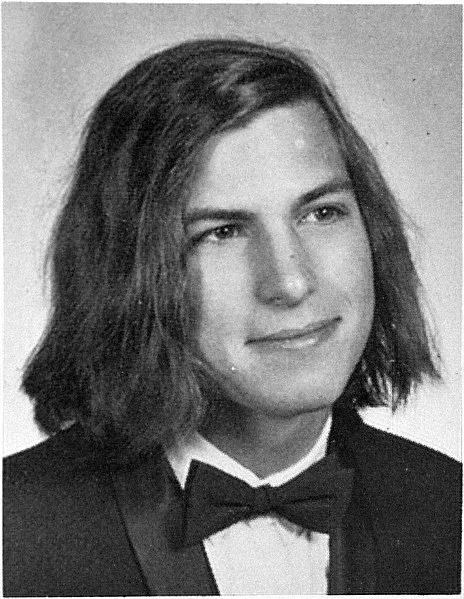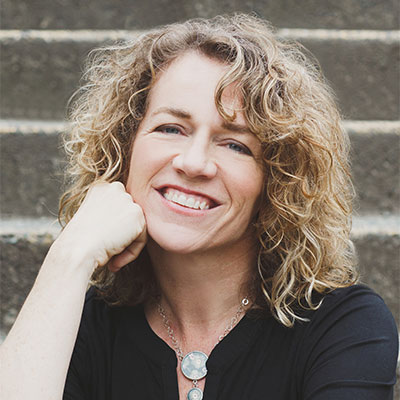In this extract from Kid Innovators, Robin Stevenson tells the story of a creative, rebellious child who grew up to change the world with the iPhone.
Steve Jobs is best known for Mac computers, iPhones, and iPads, but his innovative ideas also transformed the music, movie, and digital-publishing industries. As an adult, he was both brilliant and difficult. Even as a small child, he wanted to do things his own way.
Steve was born in San Francisco, on 24 February 1955. His birth parents were a graduate student named Joanna Schieble and a Syrian teaching assistant named Abdulfattah Jandali. Joanne and Abdullah had met at the University of Wisconsin, fallen in love, and traveled to Syria together. When Joanne became pregnant, they were not ready to become parents. Once back home, they decided to place their baby for adoption.
Paul and Clara Jobs had been wanting a child for many years before one finally came into their lives. They adopted Joanne and Abdullah’s son and named him Steven Paul. Steve grew into an active and curious toddler. Twice they had to rush him to the emergency room: one time because Steve had stuck a metal pin into an electric socket and burned his hand, and another time because he had eaten poison!
When Steve was two, his parents adopted a baby girl named Patty. Three years later, the family moved to the town of Mountain View, near Palo Alto, in California. Steve later said that his childhood home was one of the things that inspired him as a designer. “We had nice toasty floors when I was a kid,” he said, remembering the radiant heating in the house. “I love it when you can bring really great design and simple capability to something that doesn’t cost much.”
Steve always knew he was adopted. When he was about six years old, he told a little girl who lived across the street. “So, does that mean your real parents didn’t want you?” she asked. Steve ran home crying. His parents explained that was not the case at all. “We specifically picked you,” they said, speaking with great emphasis to make sure he understood. “I’ve always felt special,” Steve later said. “My parents made me feel special.”
The family’s house had a garage where Paul, a mechanic, could work on his cars. He marked off one section of a table and told Steve, “This is your workbench now.” Steve wasn’t interested in cars, but he liked spending time tinkering with his dad. When Paul went to the junkyard to look for parts, Steve went along. He admired his dad’s attention to detail. “He loved doing things right,” Steve said. “He even cared about the look of the parts you couldn’t see.”
Read more about great inventors:
- Five women who are inventing our world and why we should celebrate their achievements
- 10 cool projects created by kids addressing real-world problems
Growing up in Silicon Valley, Steve had many neighbours who worked as engineers. One of them, Larry Lang, became an important mentor. “What Larry did to get to know the kids in the block was rather a strange thing,” Steve explained. “He put out a carbon microphone and a battery and a speaker on his driveway where you could talk into the microphone and your voice would be amplified by the speaker.”
Steve’s father had told him that an electronic amplifier was needed to do this, but here was a system that worked without one. “I proudly went home to my father and announced that he was all wrong and that this man up the block was amplifying voice with just a battery,” he recalled. “My father told me that I didn’t know what I was talking about and we got into a very large argument.” So, Steve dragged his dad to Larry’s house so he could see it for himself.
Over the next few years, Larry taught Steve a lot about electronics. He introduced him to Heathkits, a type of kit with detailed instructions for making items like television receivers and radio equipment. Steve said that these kits not only taught him how things worked but also helped him develop a belief that even things that seemed complex – like televisions and radios – could be studied and understood.
Steve’s mom, Clara, taught him to read before he started kindergarten. In the classroom, though, Steve’s learning did not go smoothly. His first school was Monta Loma Elementary, just four blocks from his house. “I was kind of bored for the first few years, so I occupied myself by getting into trouble,” he admitted.
Steve’s best friend was a boy named Rick. One time, he and Rick made posters advertising “Bring Your Pet to School Day”. Kids showed up with their animals and chaos broke loose, with dogs chasing cats all over the school.
Another time, Steve and Rick persuaded the other students to tell them their bike lock combinations. Once they knew dozens of combinations, they undid the locks and switched them around. When school ended that day, the students couldn’t unlock their bikes. According to Steve, it took until ten o’clock that night to sort out the mess.
Another time, Steve let a snake loose in the classroom, and then he set off a small explosion under the teacher’s chair. By the end of third grade, Steve had been sent home from school several times. His parents didn’t punish him, though. They thought it was partly the school’s fault – Steve was misbehaving because he wasn’t being challenged in class. Steve agreed, saying that he was always being asked to “memorise stupid stuff.”
But being bored was only part of the problem. Steve also had a strong dislike for authority and hated being told what to do. Luckily, in fourth grade, he had a teacher who understood him. Mrs Hill started out by bribing Steve to do math problems, but before long, he was enjoying learning and wanted to please her. “I learned more from her than any other teacher,” Steve said. If it hadn’t been for Mrs Hill, he admitted, “I’m sure I would’ve gone to jail.”

Mrs Hill recognised that Steve needed to be challenged, and the school recommended that he skip two grades. His parents thought that was too much, but they agreed to let Steve move up from fourth grade to sixth. That meant switching to another school.
At Crittenden Middle School, the environment was much rougher, and fights were common. Being a year younger than the other students was hard, and Steve was often bullied. His sixth-grade report card noted that he had trouble getting motivated. Halfway through seventh grade, Steve decided he’d had enough.
“He came home one day,” recalled his father, “and said if he had to go back there again, he just wouldn’t go.” His parents decided to move to an area with better schools. They scraped together the money and bought a home in Los Altos, a few miles away.
In ninth grade, Steve started at Homestead High. The school had an electronics class with a well-equipped lab and a passionate teacher named Mr McCollum. But Steve, with his rebellious attitude and rejection of authority, clashed with the teacher. According to Mr McCollum, Steve was usually “off in a corner doing something on his own and really didn’t want to have much of anything to do with either me or the rest of the class.” Although he loved electronics, Steve dropped the course.
Outside school, however, Steve was beginning to find others who shared his interests. He joined the Explorer’s Club at Hewlett-Packard, where Larry Lang worked. The students met in the cafeteria, where engineers would talk to them about their projects: lasers, holography, light-emitting diodes. Steve was in heaven. It was at HP that he saw his first computer. “I fell in love with it,” he said.
Read more biographies of inventors:
- Nikola Tesla: A genius or a charlatan?
- Leonardo da Vinci's forgotten legacy
- John Bardeen: The greatest physicist you (probably) never heard of
Steve was also working on a project of his own: he wanted to build a frequency counter to measure the rate of pulses in an electronic signal. He didn’t have all the parts he needed, so he looked in the phone book for Bill Hewlett, the head of Hewlett-Packard, and called him at home. Not only did he get the parts he needed, but Bill also gave him a summer job in a factory that made frequency counters.
It was while he was still in high school that Steve Jobs met his future business partner, Steve Wozniak. Wozniak was five years older and highly adept with electronics. In fact, he had learned some of his skills in Mr McCollum’s class.
When Steve was twenty-one, he and Wozniak founded the Apple Computer Company. At first, they worked out of Steve’s bedroom, and later they moved the business into the Jobs family’s garage. Two years later, Steve had earned more than a million dollars – and by the time he was 25, he’d made over 250 million dollars.
Many of the things we use in our daily lives wouldn’t exist if it weren’t for Steve Jobs: Mac computers, iPhones, iPods and iPads, iTunes, Apple Stores, even Pixar’s Toy Story!
But money wasn’t what drove him. “You’ve got to find what you love,” he said. “Your work is going to fill a large part of your life, and the only way to be truly satisfied is to do what you believe is great work. And the only way to do great work is to love what you do. If you haven’t found it yet, keep looking.”
Kid Innovators by Robin Stevenson is out now (£11.99, Quirk Books).
- Buy now from Amazon UK, Waterstones or Bookshop.org
